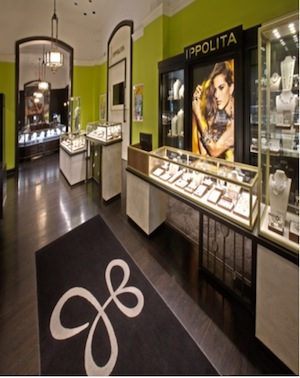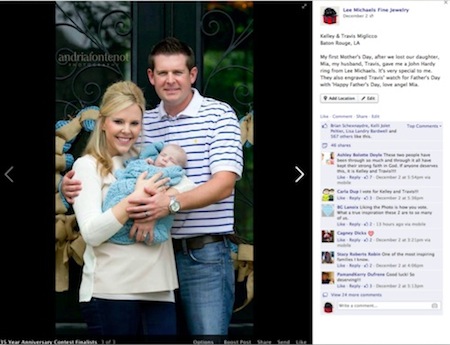Articles and News
Why The Recession Was Good For Jewelers, And The Best Opportunities To Make Money In 2014 | February 13, 2014 (0 comments)

Scottsdale, AZ—The second retailer education session of the Centurion Scottsdale Show featured a panel discussion titled “The Best Opportunities for Better Fine Jewelers In 2014.”
Led by Ruth Batson, CEO of The American Gem Society (AGS) and AGS Laboratories, the panel consisted of Jeannie Joas of J.B. Hudson Jewelers in Minneapolis, MN, and Scott Berg of Baton Rouge, LA-based Lee Michaels Fine Jewelers, with eight stores in Louisiana, Texas, and Mississippi.
Batson opened the discussion by presenting some key statistics for upscale fine jewelers. Among them:
- According to an October 2013 report in IDEX magazine, the total fine jewelry market is significantly larger than earlier estimates indicated. Sales for 2012 were revised upward to $73.5 billion, up from the initial estimate of $71.5 billion. The United States accounts for about half of the world’s total estimated $150 billion in fine jewelry and watch sales.
- Although the total fine jewelry market has grown significantly, specialty jewelers’ share of it has dropped to 42.7% from a high of 75% in the 1970s, says the IDEX report. Outlets ranging from department stores to Amazon to Costco to Walmart are picking up market share.
- Market share is eroding faster from independent jewelers than chains.
- According to a recent AGS survey of its members, the average amount of a typical sale is $1,065.
- The average selling space for AGS jewelers is 2161 square feet; with 227 linear feet of display.
- 55% of AGS retailers saw sales growth in 2013, the average increase was 9.9%. 53% had a “good” holiday season and 47% had a “great” holiday season.
- 61% of respondents increased marketing and advertising dollars in 2013. It was the top change they made in their business.
- Most AGS jewelers (79%) advertise online, and 77.3% spend money for social media advertising.
- On a busy day a typical AGS store will ring up 34 transactions, on a slow day it’s about nine.
- Revenue breakdowns for a typical AGS retailer: diamonds, 24.7%; repairs, 11.1%, color, 9.5%, watches, 8.6%, and custom design, 8.6%.
- The average age of an AGS jeweler is 56.6 years old, and the average business is 59.6.
Millennials represent a huge opportunity for jewelers, says Batson. The Millennial generation already spends $200 billion a year on goods and services, and it’s predicted to outspend Baby Boomers by 2017.
Millennials are digital, of course, and heavily dependent on peer reviews and their virtual communities. Batson cited Buzzfeed as a key influencer. They are civic- and social-minded, and they’re educated: 68% went to college, compared with only 28% of Boomers, making them out-of-the-box thinkers who like to push boundaries.
How the recession led to more high-ticket sales. Jeannie Joas, owner of JB Hudson Jewelers in Minneapolis, surprised the audience by proclaiming the recession turned out to be a good thing for business. During the recession, many jewelers highlighted lower price points to capture what they cold of a dwindling market, she said, but it also forced them to really scrub away at extra expenses, with the net result of a business that’s much more financially sound.
“When times are flush, it’s easy to spend and not really think about it, but when you have to think about it, it makes you a better businessperson,” she said.
The recovery, though both slow and uneven, has favored the higher-income households that a luxury jeweler depends on. For 2014, Joas sees significant opportunity for better fine jewelers to start selling large items again. Increased confidence among affluent consumers—coupled with frugality fatigue—has made them ready to spend money again, and they want to have fun doing it.

Interior of JB Hudson.
At JB Hudson, says Joas, the number of units sold in the last three years has remained flat year on year. But her average sale has risen 25.5% from 2011 to 2013, and the number of high-ticket sales has soared. From 2012 to 2013, the number of sales above $50,000 almost doubled, while both 2012 and 2013 saw increases in sales over both $100,000 and $200,000—figures absent from 2011’s totals. Clients, she says, consider these large purchases as “transfers of wealth to hard assets they can enjoy,” and are seeking “heirloom-quality, legacy jewelry that is investment-grade.”
In order to be part of this recovery, she says, you need to have larger items in stock, whether you own them, get them in on memo, or bring them in for special events.
“Identify your best vendors to supply large items, and build a strong relationship with them,” she said. Sales associates must be especially knowledgeable for these kinds of sales. They need to understand what the clients want, how to present important pieces of quality and value, and how to create a highly positive purchase experience for the client.
You never know who’s going to walk in the door, she said, relating the experience of having just returned from a Christie’s Magnificent Jewelry auction, where she bought heavily—just before the infamous Black Friday stock market crash of 1987.
Her store was located in a hotel near Minneapolis’s famed Mayo Clinic. There was an Arab sultan staying at the hotel, and he wanted to buy some jewelry. But since it was during Ramadan, he couldn’t go shopping during the day when the store was open, and as an observant Muslim he also wouldn’t deal directly with a woman. So Joas sent her male sales associates upstairs to the sultan’s suite at 3 a.m., with everything she had just bought at Christie’s, and anything else she thought he might like.
A few hours later, the men came back, stony-faced.
“What?” she asked. “What happened?”
They broke into ear-to-ear grins. “He bought it all. Every last piece!”
Stock high, show high, and sell high, she concluded. “And make money!”
Top-tier training and a powerful social media strategy. Next, Scott Berg addressed the importance of both in-store training and an effective social media plan. In-store training, he emphasized, not only provides a better customer experience, but it creates loyal employees because it shows the company values professional growth and is willing to invest in its employees’ careers. Lee Michaels offers training in product, position, industry, and personal development, and while all new hires are put through six weeks of training, employees must apply for the numerous advanced training courses available—ensuring only those who are committed to it—and then share what they’ve learned with others in store staff meetings.
Berg then divulged the firm’s hugely successful social media strategy. In October 2013, it wasn’t so successful: Lee Michaels’ page on Facebook had fewer than 5,000 fans. The goal: 25,000 fans by the end of 2013. That’s when critical mass starts to build.
First they enlisted an outside agency, Fuse, which specializes in blending traditional and digital touchpoints. Then they developed three strategies for reaching the desired number: sports team-related jewelry giveaways, a $3,500 shopping spree to celebrate the store’s 35th anniversary, and holiday gifts.
For the sports program, they used geo-targeted advertising to make sure they were reaching the right fans with the right message. No LSU “Geaux Tigers” for University of Texas fans to see! Every two weeks, another necklace was given away, using multiple forms of Facebook advertising, including display ads, newsfeed ads, promoted posts and sponsored stories. All who “liked” or commented on Facebook were entered to win.

Targeted posts on Facebook ensured Lee Michaels reached the right fans in the right state; those who "liked" the page or commented were entered into a drawing to win a free necklace. It helped boost their fan numbers significantly.
For the $3,500 shopping spree, the jeweler focused on engaging its growing fans by asking them to “share their Lee Michaels story” through comments on posts for a three-week time period. Promoted posts reached non-fans and friends of fans.
The goal was to have three different “kinds” of finalists: an older couple, an engagement story, and a Mother’s Day story. After choosing the top three stories, Lee Michaels kicked off a week for fans to vote for their favorite story. Engagement skyrocketed as the top three stories were shared, “liked” and commented on.

This couple's bittersweet Mother's Day story--the husband bought his wife a ring at Lee Michaels in memory of their daughter who had died--was the winning vote-getter for the $3,500 shopping spree.
Finally, using display ads, newsfeed ads, promoted posts, and sponsored stories to promote holiday gifts from Lee Michaels is how the jeweler ended the year.
“We encouraged online shopping for Christmas gifts by reaching people where they already are: Facebook,” said Berg.
In total, Lee Michaels’ Facebook ads combined totaled 16,289,626 impressions. Q4 2013 visits to the website, lmfj.com, increased by 6.44% compared to Q4 of 2012, for a total of 131,889. Facebook and Pinterest became the top two referrers to lmfj.com, and mobile a critical strategy for this campaign. And the jeweler surpassed its goal of 25,000 fans by 3,307 likes, for a total of 28,307.
The firm also enhanced its local directory marketing online, using analytics and enhanced search tools to ensure it came up higher in the rankings. All these, says Berg, will be the foundation for its 2014 strategy, which is to grow on what’s been accomplished so far.







